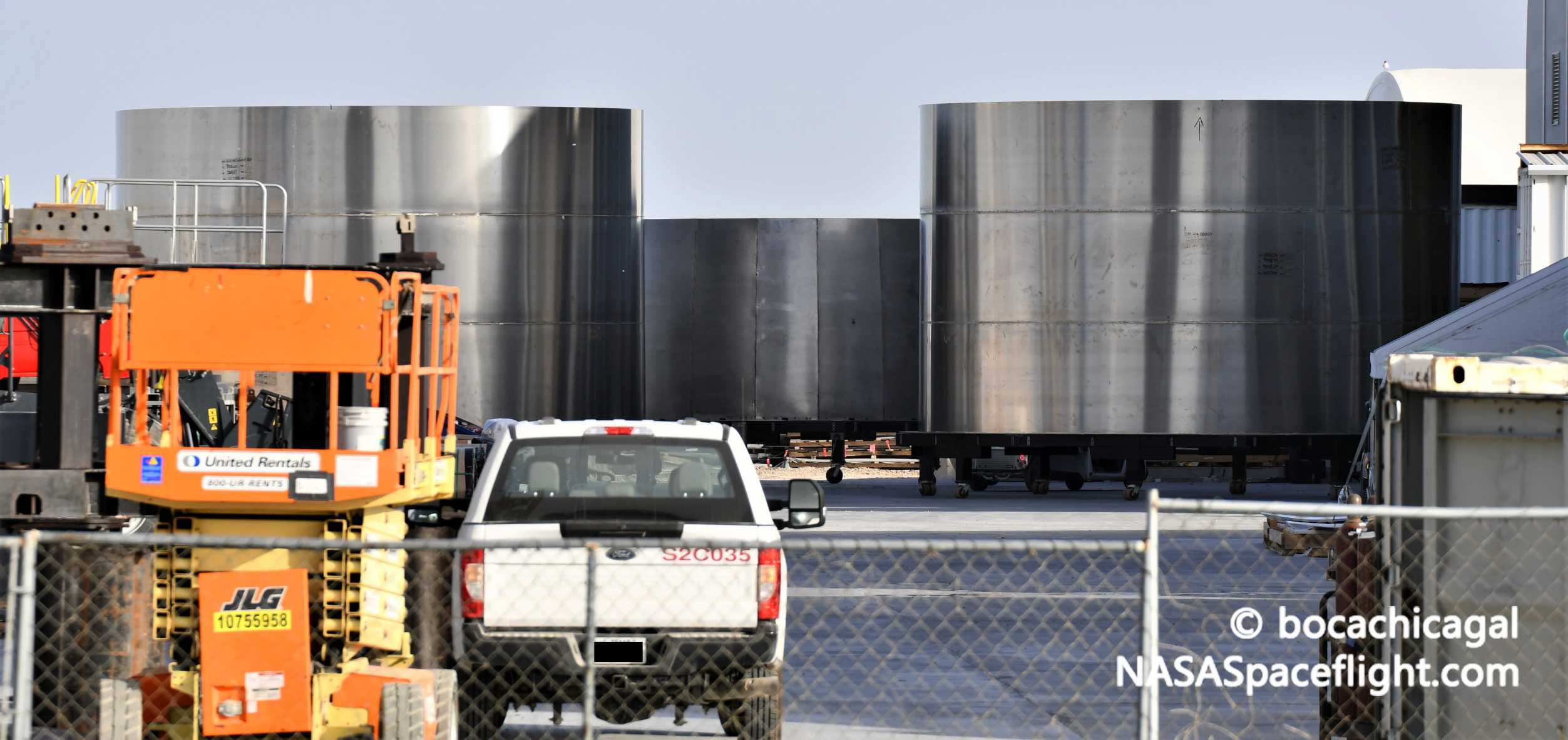
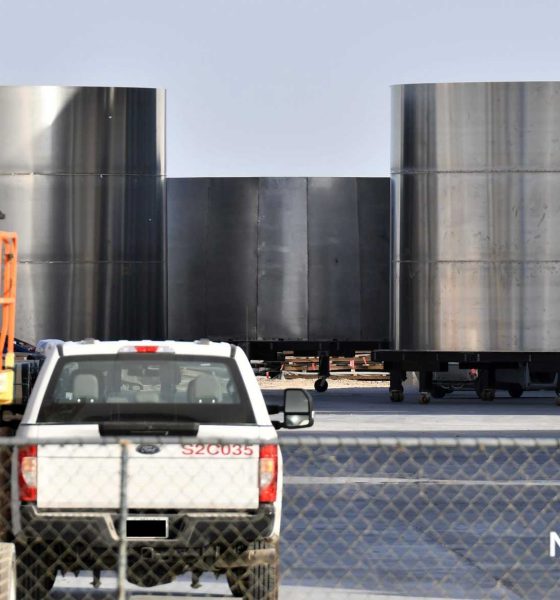
News
SpaceX begins building upgraded Starship prototype
A Starship part spotted on July 20th confirms that SpaceX is already well into the process of building a significantly upgraded full-scale prototype.
Following in the footsteps of five or six full-scale ships before it, information published by NASASpaceflight.com suggests that Starship SN8 will be a substantial departure from its predecessors. Thanks to data gathered by testing the Starship SN7 test tank to destruction on June 24th, SpaceX has determined that a different alloy – known as 304L – is superior to the 301 stainless steel all Starship prototypes have been built out of up to now.
SN8 is SpaceX’s response to that discovery. As usual, the company has performed smaller tests before deciding to build a full-scale Starship prototype – identical to all previous SNx prototypes beyond the alloy change – out of 304L stainless steel. As a result, Starship SN8 – once complete – may have the most potential of any prototype built thus far, but its fate will also be more uncertain than most of its predecessors.
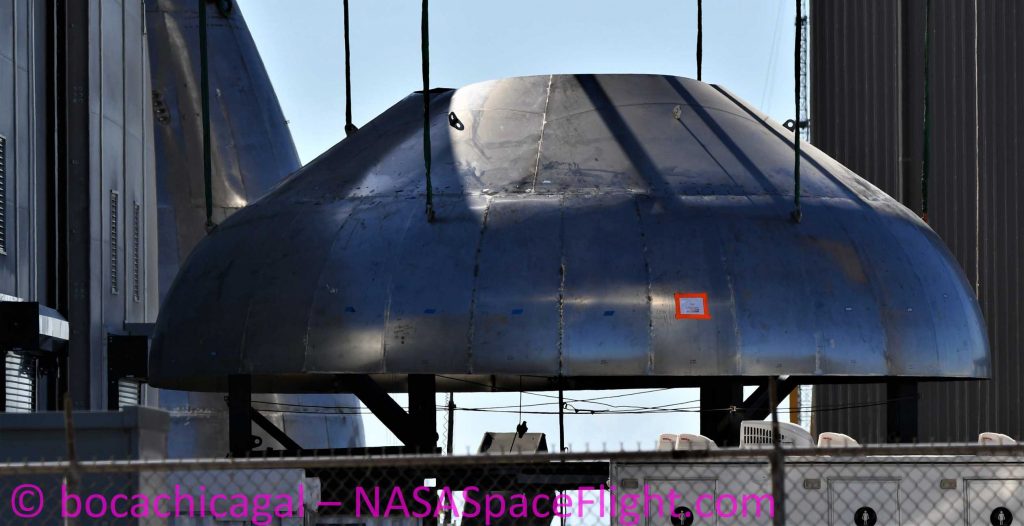
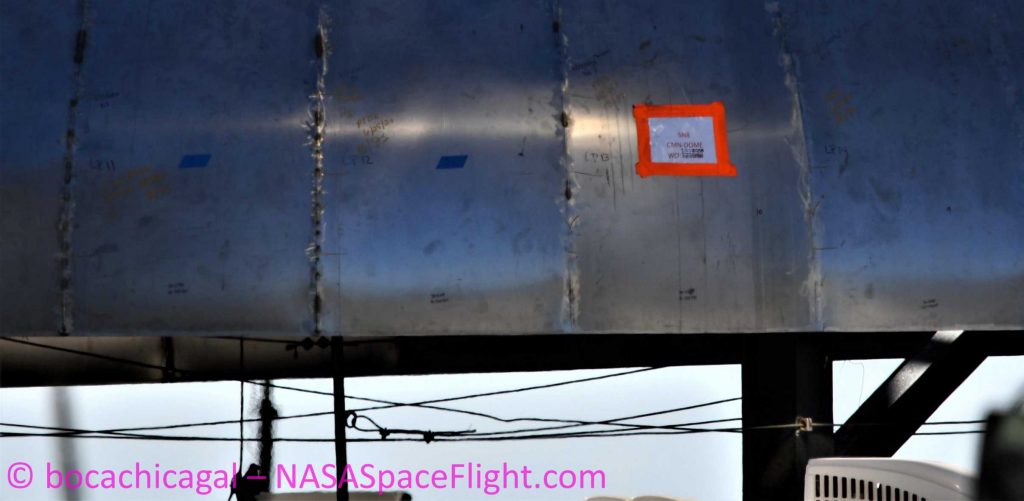
On June 24th, SpaceX destroyed the SN7 Starship test tank as part of a controlled cryogenic proof test – essentially a pressure test at cryogenic (ultra-cold) temperatures. Departing from routine, CEO Elon Musk never commented on the test, leaving its results shrouded in mystery. According to NASASpaceflight, however, SN7 “achieved a record pressure before it failed.”
Designed to test a different formulation of stainless steel, that success implies that SN7 proved that the 304L alloy will not only be more malleable and forgiving at cryogenic temperatures – but is also more capable overall compared to 301 steel. To beat the record set by the second or third Starship test tank in January or March 2020, SN7 would have had to reach pressures of ~8.6 bar or higher – effectively icing on the cake for the already-demonstrated ~140% safety factor.
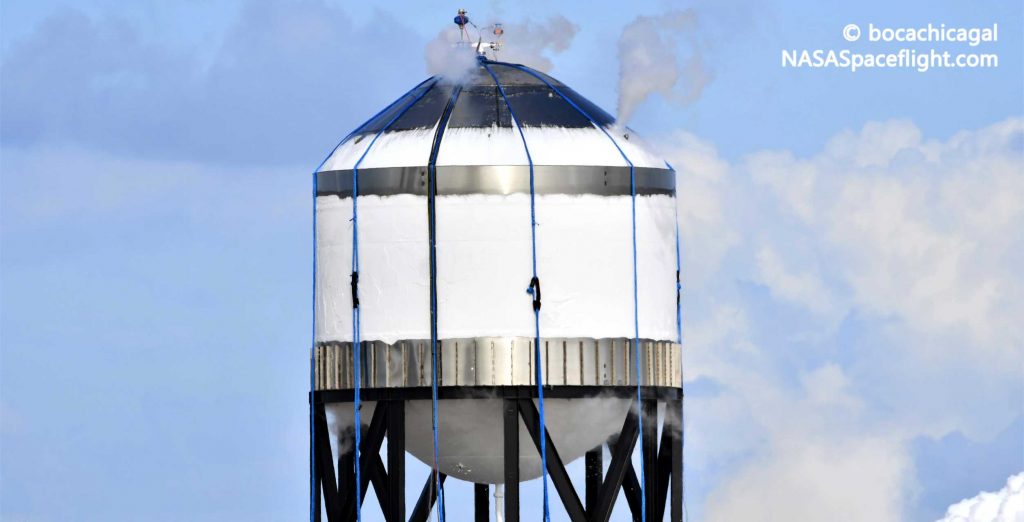
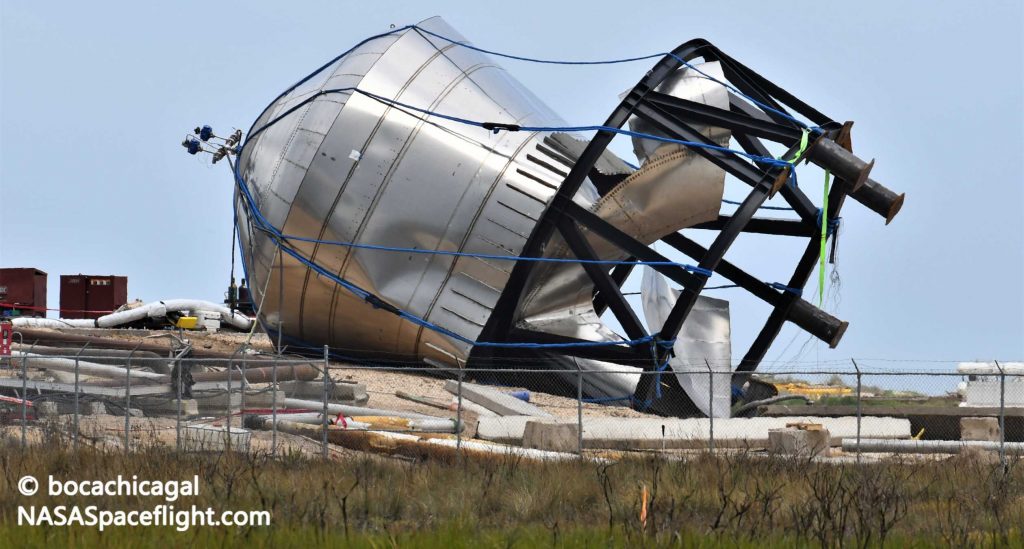
A full-scale Starship has yet to survive proof tests at those pressures but Starship SN4 did become the first to complete a full cryo proof, sustaining ~7.5 bar (~110 psi) before it was safely depressurized. Currently on the pad and preparing for an imminent static fire and hop test debut, Starship SN5 is unlikely to put pressure on that record unless that it aces both of the aforementioned trials. Built entirely out of the 304L alloy already proven to be superior to 301, SN8 may well be the golden goose of prototypes.
“The vehicle will feature major upgrades over previous Starship prototypes. SN8 will be built out of 304L stainless steel versus 301 and will receive a fairing, aerosurfaces, and three Raptor engines to allow for a higher-altitude test flight.”
NASASpaceflight.com — July 15th, 2020
The appearance of SN8’s labeled common dome – the dome separating Starship’s liquid oxygen and methane tanks – implies that a variety of other parts spotted over the last few days are also meant for the next full-scale rocket. Mounted on a stand purpose-built for the task, the SN8 common dome will soon be ‘sleeved’ by one or several stacked steel rings, after which it can be welded to the rest of the Starship’s tank. An engine section and thrust structure – likely SN8’s – in the late stages of assembly was spotted three days prior, while an upper tank dome that could be for either SN8 or test tank SN7.1 was captured in the same photos.
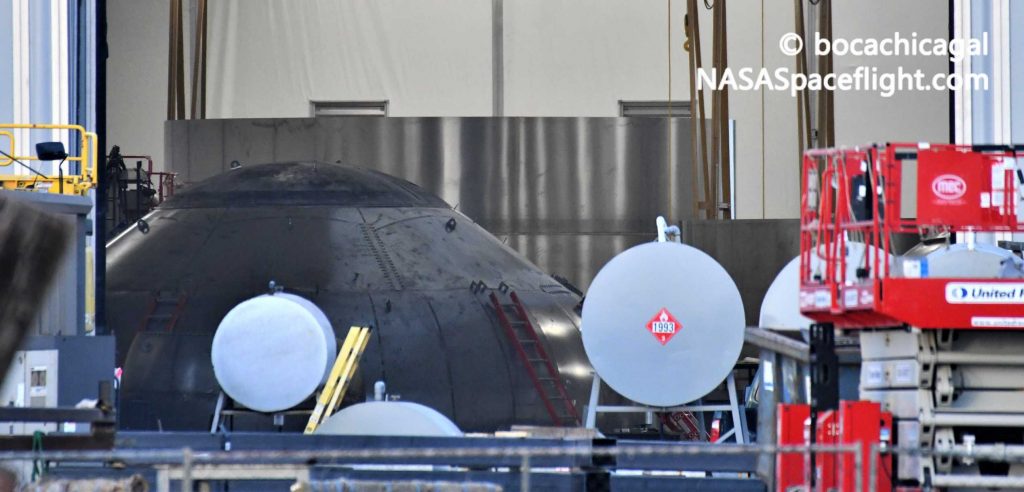

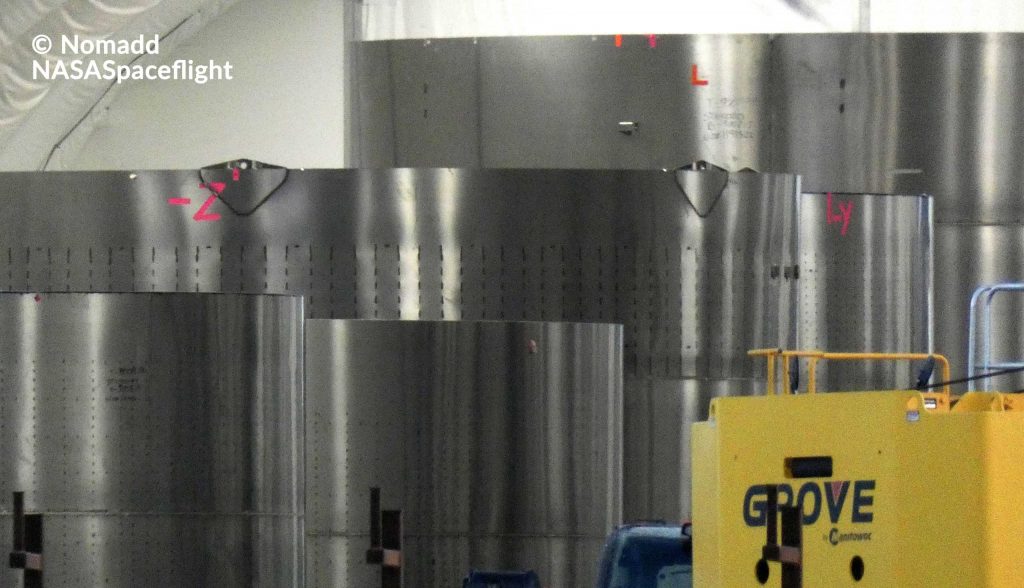
In the last photo, taken on July 13th, there’s even signs of what could be Starship SN9 – hinted at by the appearance of two Starship engine sections signified by the pattern of welds on their exteriors. Those welds are incontrovertible signs of the stringers used to strengthen Starship engine sections and they haven’t been used anywhere else on past prototypes.
Based on the sheer number of steel rings and domes currently floating around SpaceX’s Boca Chica, Texas Starship factory, SN8 could be a just a week – or even less – away from final stacking operations. If SN5 leaves the pad intact and completes its wet dress rehearsal, static fire, and flight debut without issue, SN8 could be up to bat much sooner than later.
Check out Teslarati’s Marketplace! We offer Tesla accessories, including for the Tesla Cybertruck and Tesla Model 3.

Cybertruck
Tesla updates Cybertruck owners about key Powershare feature

Tesla is updating Cybertruck owners on its timeline of a massive feature that has yet to ship: Powershare with Powerwall.
Powershare is a bidirectional charging feature exclusive to Cybertruck, which allows the vehicle’s battery to act as a portable power source for homes, appliances, tools, other EVs, and more. It was announced in late 2023 as part of Tesla’s push into vehicle-to-everything energy sharing, and acting as a giant portable charger is the main advantage, as it can provide backup power during outages.
Cybertruck’s Powershare system supports both vehicle-to-load (V2L) and vehicle-to-home (V2H), making it flexible and well-rounded for a variety of applications.
However, even though the feature was promised with Cybertruck, it has yet to be shipped to vehicles. Tesla communicated with owners through email recently regarding Powershare with Powerwall, which essentially has the pickup act as an extended battery.
Powerwall discharge would be prioritized before tapping into the truck’s larger pack.
However, Tesla is still working on getting the feature out to owners, an email said:
“We’re writing to let you know that the Powershare with Powerwall feature is still in development and is now scheduled for release in mid-2026.
This new release date gives us additional time to design and test this feature, ensuring its ability to communicate and optimize energy sharing between your vehicle and many configurations and generations of Powerwall. We are also using this time to develop additional Powershare features that will help us continue to accelerate the world’s transition to sustainable energy.”
Owners have expressed some real disappointment in Tesla’s continuous delays in releasing the feature, as it was expected to be released by late 2024, but now has been pushed back several times to mid-2026, according to the email.
Foundation Series Cybertruck buyers paid extra, expecting the feature to be rolled out with their vehicle upon pickup.
Cybertruck’s Lead Engineer, Wes Morrill, even commented on the holdup:
As a Cybertruck owner who also has Powerwall, I empathize with the disappointed comments.
To their credit, the team has delivered powershare functionality to Cybertruck customers who otherwise have no backup with development of the powershare gateway. As well as those with solar…
— Wes (@wmorrill3) December 12, 2025
He said that “it turned out to be much harder than anticipated to make powershare work seamlessly with existing Powerwalls through existing wall connectors. Two grid-forming devices need to negotiate who will form and who will follow, depending on the state of charge of each, and they need to do this without a network and through multiple generations of hardware, and test and validate this process through rigorous certifications to ensure grid safety.”
It’s nice to see the transparency, but it is justified for some Cybertruck owners to feel like they’ve been bait-and-switched.
News
Tesla’s northernmost Supercharger in North America opens

Tesla has opened its northernmost Supercharger in Fairbanks, Alaska, with eight V4 stalls located in one of the most frigid cities in the U.S.
Located just 196 miles from the Arctic Circle, Fairbanks’s average temperature for the week was around -12 degrees Fahrenheit. However, there are plenty of Tesla owners in Alaska who have been waiting for more charging options out in public.
There are only 36 total Supercharger stalls in Alaska, despite being the largest state in the U.S.
Eight Superchargers were added to Fairbanks, which will eventually be a 48-stall station. Tesla announced its activation today:
North America’s northernmost Supercharger Fairbanks, AK (8 stalls) opened to public. https://t.co/M4l04DZ6B5 pic.twitter.com/zyL6bDuA93
— Tesla Charging (@TeslaCharging) December 12, 2025
The base price per kWh is $0.43 at the Fairbanks Supercharger. Thanks to its V4 capabilities, it can charge at speeds up to 325 kW.
Despite being the northernmost Supercharger in North America, it is not even in the Top 5 northernmost Superchargers globally, because Alaska is south of Norway. The northernmost Supercharger is in Honningsvåg, Norway. All of the Top 5 are in the Scandanavian country.
Tesla’s Supercharger expansion in 2025 has been impressive, and although it experienced some early-quarter slowdowns due to V3-to-V4 hardware transitions, it has been the company’s strongest year for deployments.
🚨🚨 Tesla Supercharging had a HUGE year, and they deserve to be recognized.
🍔 Opened Tesla Diner, a drive-in movie theater with awesome, Chef-curated cuisine
🔌 Gave access to Superchargers to several EV makers, including Hyundai, Genesis, Mercedes-Benz, Kia, Lucid, Toyota,… pic.twitter.com/yYT2QEbqoW
— TESLARATI (@Teslarati) December 10, 2025
Through the three quarters of 2025, the company has added 7,753 stations and 73,817 stalls across the world, a 16 percent increase in stations and an 18 percent increase in stalls compared to last year.
Tesla is on track to add over 12,000 stalls for the full year, achieving an average of one new stall every hour, an impressive statistic.
Recently, the company wrapped up construction at its Supercharger Oasis in Lost Hills, California, a 168-stall Supercharger that Tesla Solar Panels completely power. It is the largest Supercharger in the world.
News
Tesla shocks with latest Robotaxi testing move
Why Tesla has chosen to use a couple of Model S units must have a reason; the company is calculated in its engineering and data collection efforts, so this is definitely more than “we just felt like giving our drivers a change of scenery.”

Tesla Model S vehicles were spotted performing validation testing with LiDAR rigs in California today, a pretty big switch-up compared to what we are used to seeing on the roads.
Tesla utilizes the Model Y crossover for its Robotaxi fleet. It is adequately sized, the most popular vehicle in its lineup, and is suitable for a wide variety of applications. It provides enough luxury for a single rider, but enough room for several passengers, if needed.
However, the testing has seemingly expanded to one of Tesla’s premium flagship offerings, as the Model S was spotted with the validation equipment that is seen entirely with Model Y vehicles. We have written several articles on Robotaxi testing mules being spotted across the United States, but this is a first:
🚨 Tesla is using Model S vehicles fitted with LiDAR rigs to validate FSD and Robotaxi, differing from the Model Ys that it uses typically
Those Model Y vehicles have been on the East Coast for some time. These Model S cars were spotted in California https://t.co/CN9Bw5Wma8 pic.twitter.com/UE55hx5mdd
— TESLARATI (@Teslarati) December 11, 2025
Why Tesla has chosen to use a couple of Model S units must have a reason; the company is calculated in its engineering and data collection efforts, so this is definitely more than “we just felt like giving our drivers a change of scenery.”
It seems to hint that Tesla could add a premium, more luxury offering to its Robotaxi platform eventually. Think about it: Uber has Uber Black, Lyft has Lyft Black. These vehicles and services are associated with a more premium cost as they combine luxury models with more catered transportation options.
Tesla could be testing the waters here, and it could be thinking of adding the Model S to its fleet of ride-hailing vehicles.
Reluctant to remove the Model S from its production plans completely despite its low volume contributions to the overall mission of transitioning the world to sustainable energy, the flagship sedan has always meant something. CEO Elon Musk referred to it, along with its sibling Model X, as continuing on production lines due to “sentimental reasons.”
However, its purpose might have been expanded to justify keeping it around, and why not? It is a cozy, premium offering, and it would be great for those who want a little more luxury and are willing to pay a few extra dollars.
Of course, none of this is even close to confirmed. However, it is reasonable to speculate that the Model S could be a potential addition to the Robotaxi fleet. It’s capable of all the same things the Model Y is, but with more luxuriousness, and it could be the perfect addition to the futuristic fleet.








